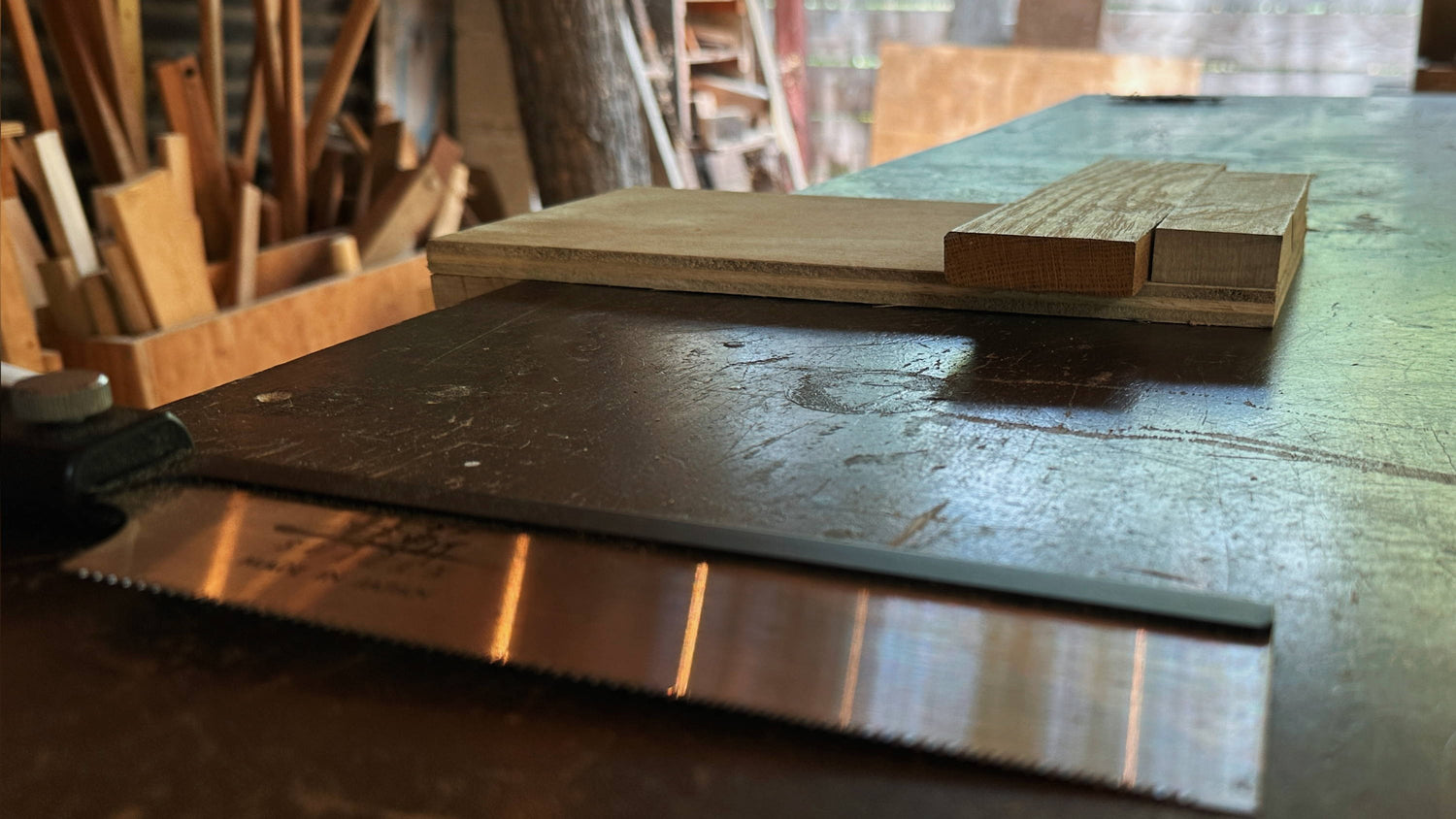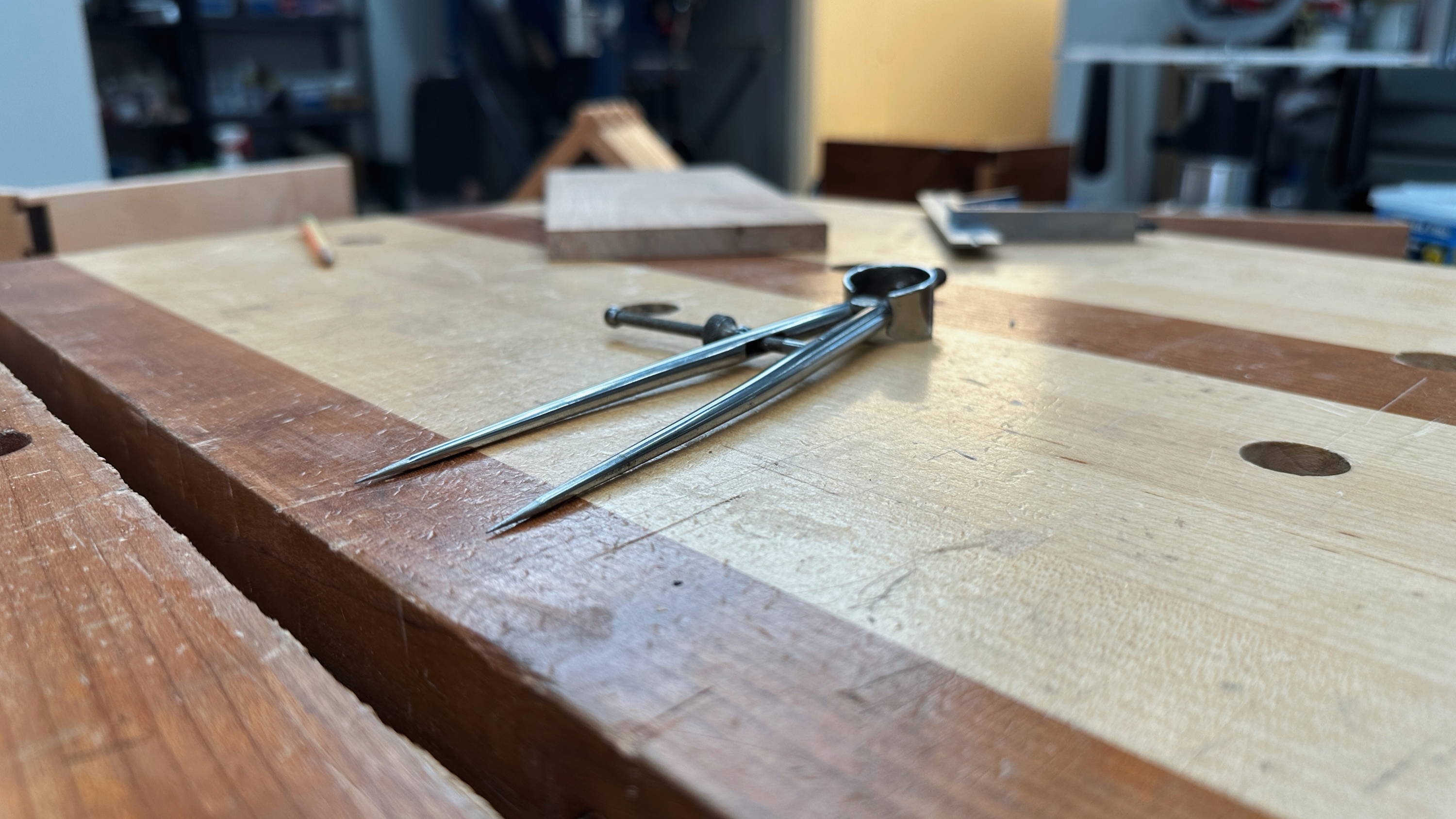Hand saws are great for quick and dirty crosscuts. But how can you make them more efficient?
The answer lies in workholding — that is, how you keep the board steady while you cut it.
A lot of woodworkers fall back on clamps (so many clamps). Either that, or they use some kind of vise.
But there’s an even faster and low-tech way to keep boards steady while you crosscut… and it’s a very old-school jig called a bench hook.
Bench hooks have been around for (at least) hundreds of years. All they are is a flat board with two fences attached on opposite ends and faces.
When set on your workbench, the bottom fence hooks on the bench’s side. The top fence serves as a stop for the board you're cutting.
What’s brilliant about them is they let you hold boards steady with only one hand — no clamps required.
They’re safer and more accurate than trying to manhandle a board singlehanded, and faster to set up than any other option.
You can build them with any type of wood. Just fasten the two fences any way you see fit and get to work.
And best of all, you can also use your bench hook as a stop when cutting tapers or chamfers with a hand plane or chisel.
Want to get better with hand saws? Here’s the #1 hand saw mistake newer woodworkers make.
How do you hold boards steady when hand sawing? Let us know in the comments below!
Follow us on Instagram @katzmosestools, on TikTok @katzmoseswoodworking, and check out my YouTube channel for more great woodworking content...
And as always, STAY SAFE IN THE SHOP!











8 comments
Jonathan Katz-Moses
I’ve used this design of bench hooks many times with a Japanese pull saw and it works just fine. Put your weight into the board and it ain’t budging. Could it be designed differently to better account for cutting on the pull stroke? Absolutely — and I implore anyone concerned about it to do so.
I’ve used this design of bench hooks many times with a Japanese pull saw and it works just fine. Put your weight into the board and it ain’t budging. Could it be designed differently to better account for cutting on the pull stroke? Absolutely — and I implore anyone concerned about it to do so.
Nelson
I made my bench hook a different way. Flat base with two dowels fastened to the bottom , the fence back from the front edge so the board being cut does not move. I drilled two dog holes in my bench for the dowels.
I made my bench hook a different way. Flat base with two dowels fastened to the bottom , the fence back from the front edge so the board being cut does not move. I drilled two dog holes in my bench for the dowels.
Shaun
I suppose the logical way to use this with a saw that cuts on the pull stroke would be to make it with a longer “reach”, and hook it on the far side of the bench…
I suppose the logical way to use this with a saw that cuts on the pull stroke would be to make it with a longer “reach”, and hook it on the far side of the bench…
Jimmie
I use a bench hook with a Japanese style saw for quick cuts on small stock often. On larger stock, I use a vice. Works great in my opinion
I use a bench hook with a Japanese style saw for quick cuts on small stock often. On larger stock, I use a vice. Works great in my opinion
Anonymous
I have to agree with David. I think you missed the mark on this one.
Most pull saw bench hooks I’ve seen require the use of a vice, so…
I have to agree with David. I think you missed the mark on this one.
Most pull saw bench hooks I’ve seen require the use of a vice, so…
James
Hey Jon I hold everything with my hands, have a lot of cuts and two fingers missing but it’s wholesome to hold with my hands. Catch ya later Jon !
Hey Jon I hold everything with my hands, have a lot of cuts and two fingers missing but it’s wholesome to hold with my hands. Catch ya later Jon !
Eric
For a Japanese pull saw, wouldn’t you want to hook it to the other side of your bench, so you are pulling against the hook? Or are you simply pushing against your piece and the hook on your pull stroke?
For a Japanese pull saw, wouldn’t you want to hook it to the other side of your bench, so you are pulling against the hook? Or are you simply pushing against your piece and the hook on your pull stroke?
David Savory
I’ve enjoyed your videos and tool innovations and I’ve even purchased some of your tools (magnetic saw holders, stop block). But this is really disappointing – have you ever even used a bench hook with a japanese saw? It’s not very easy, and certainly doesn’t help with accuracy. Bench hooks were made for use with english style saws which cut on the forward stroke, pushing the wood against the stop. When you use a japanese saw which cuts on the pull stroke, the saw pulls the wood away from the stop when cutting. I’ve been thinking about what to make to use with my pull saws in place of a bench hook so I don’t have to use a vise to hold my workpiece steady on the pull stroke, but this isn’t it. I kinda thought you actually used these things you market, but this makes me wonder.
I’ve enjoyed your videos and tool innovations and I’ve even purchased some of your tools (magnetic saw holders, stop block). But this is really disappointing – have you ever even used a bench hook with a japanese saw? It’s not very easy, and certainly doesn’t help with accuracy. Bench hooks were made for use with english style saws which cut on the forward stroke, pushing the wood against the stop. When you use a japanese saw which cuts on the pull stroke, the saw pulls the wood away from the stop when cutting. I’ve been thinking about what to make to use with my pull saws in place of a bench hook so I don’t have to use a vise to hold my workpiece steady on the pull stroke, but this isn’t it. I kinda thought you actually used these things you market, but this makes me wonder.